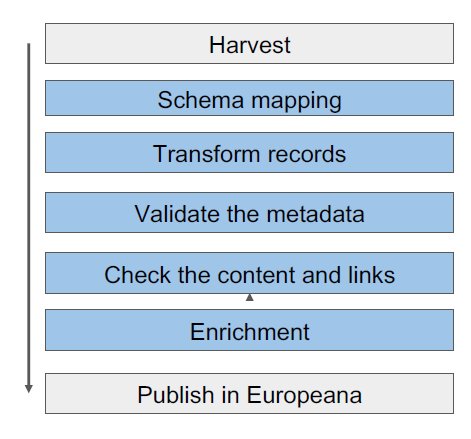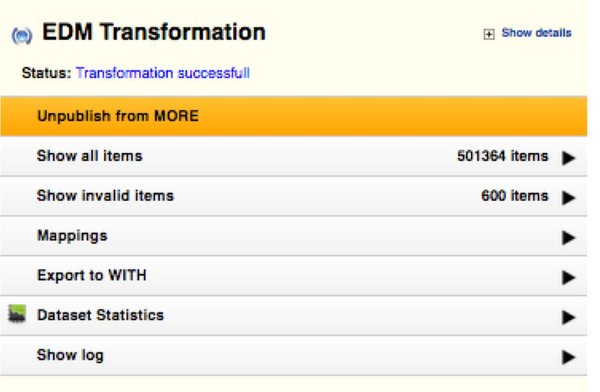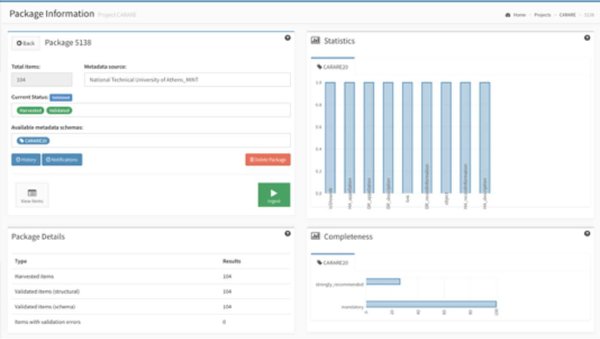Our Priorities
We want to make Europe’s rich archaeological and architectural heritage easier for people to discover and more rewarding to use Our emphasis is on quality of content and metadata over quantity Monitoring the quality is an important part of the process.
What do we mean by quality?
The Europeana Publishing Framework specifies requirements for content and metadata, these covers:
How do we monitor quality?
Monitoring happens throughout the content workflow. As you progress through the content, work flow quality issues may be identified. Remember there are people at CARARE available to help!

Actions: Mapping
MINT allows you to map the fields in your datasets to elements in the target scheme. MINT will tell you if your mapping is valid according to the rules of the schema This means that a field is mapped to every mandatory element.

Actions: Transformation
Your mapping produces an XSLT which can be used to transform all the records in your set to the target scheme. Validating the transformed dataset shows whether there are any invalid items. This means individual records miss mandatory data.

Actions: Review your dataset and the mapping
Reviewing the invalid items should show which data is missing. Common
issues include missing data in a mandatory element. All records must contain:
Sometimes it is possible to fulfill the requirements by editing the mapping, sometimes you will need to go back to your database.
Think about the quality!
Common mistakes that affect data quality:
Try to add value and improve the quality
MORe quality monitoring
In the CARARE aggregation service content is ingested on MORe (either directly or from MINT)
Metadata is transformed to EDM on ingestion and records are validated against the EDM schema rules
EDM records are available to preview

Record completeness is assessed.
MORe: Content analysis - images
Review the resolution and type of image-based content and their tier status

Consider enrichment
You can improve the quality of your metadata by running an enrichment
service, for example to:

Publishing
Once you’ve taken your dataset through all of the steps and you’re happy with the results you can ‘publish’ (or send the data to Europeana for ingestion).
This may not be the end of the quality monitoring story
Publishing is a cycle
Publishing in Europeana is not a one-off event. The workflow has stages, checks and opportunities to go back and improve your content and metadata.
Once you’ve published your collection successfully in Europeana, you can come back to CARARE and make an update to add new content or to make improvements.
Contact us! We’re here to help
Remember CARARE has a helpdesk. We can give one-to-one support with metadata mapping, enrichment, use of vocabularies, geocoding, Europeana’s publishing frameworks and rights labels.
We can offer support with use of the aggregation services MINT and MORe, and with publishing to Europeana.
Acknowledgements
These training materials were developed in collaboration with the Europeana Archaeology project and with funding by the European Commission under the Connecting Europe Facility (CEF) Telecom Programme.

